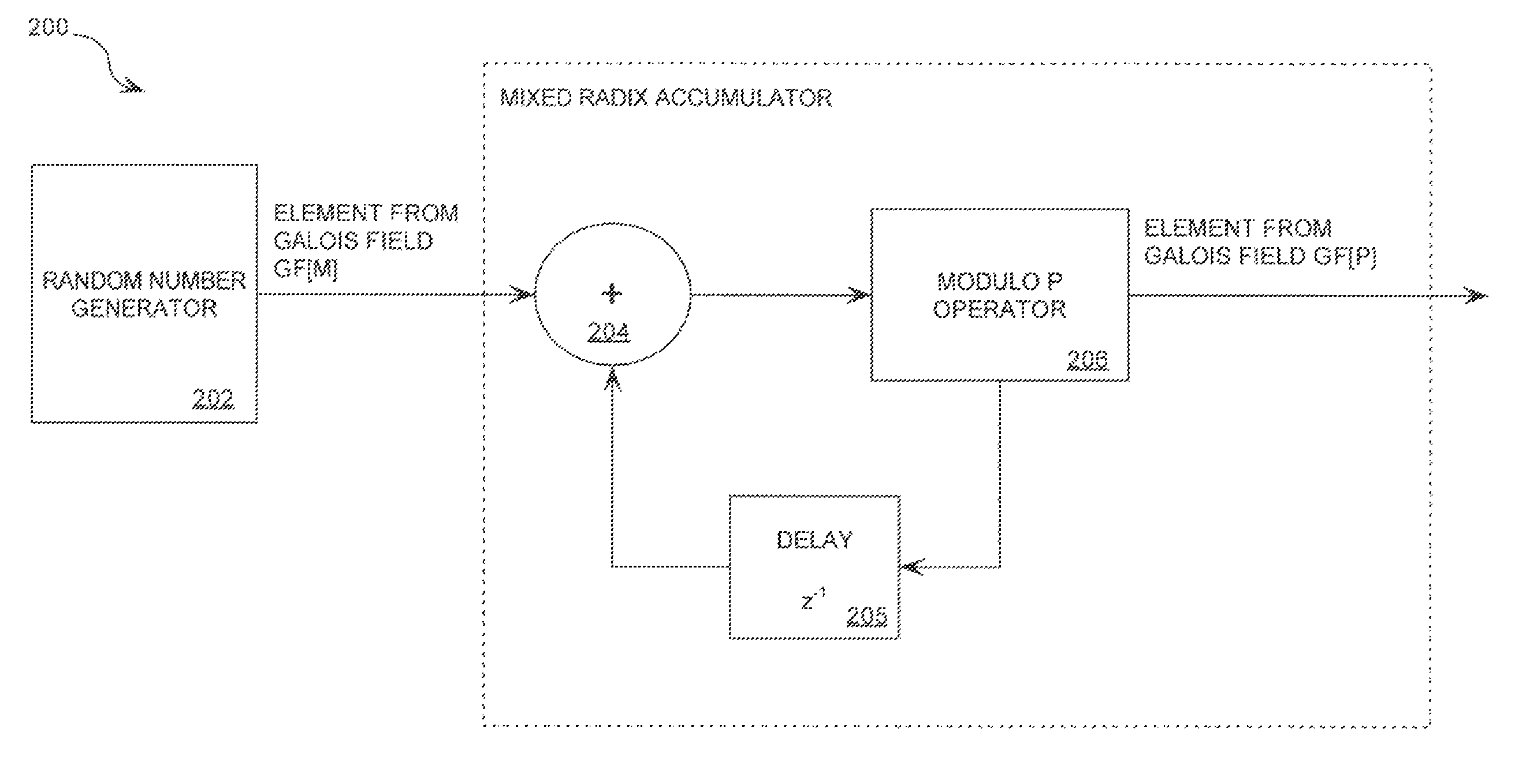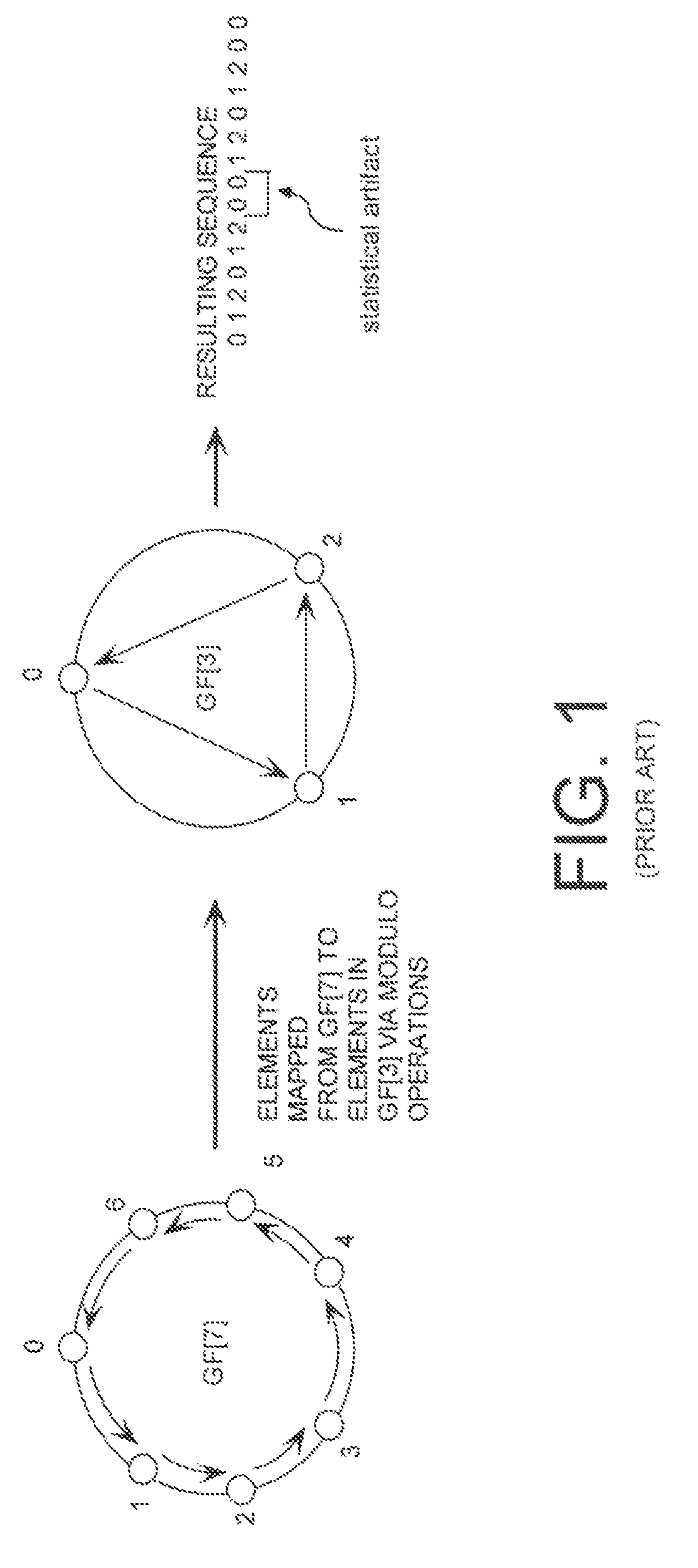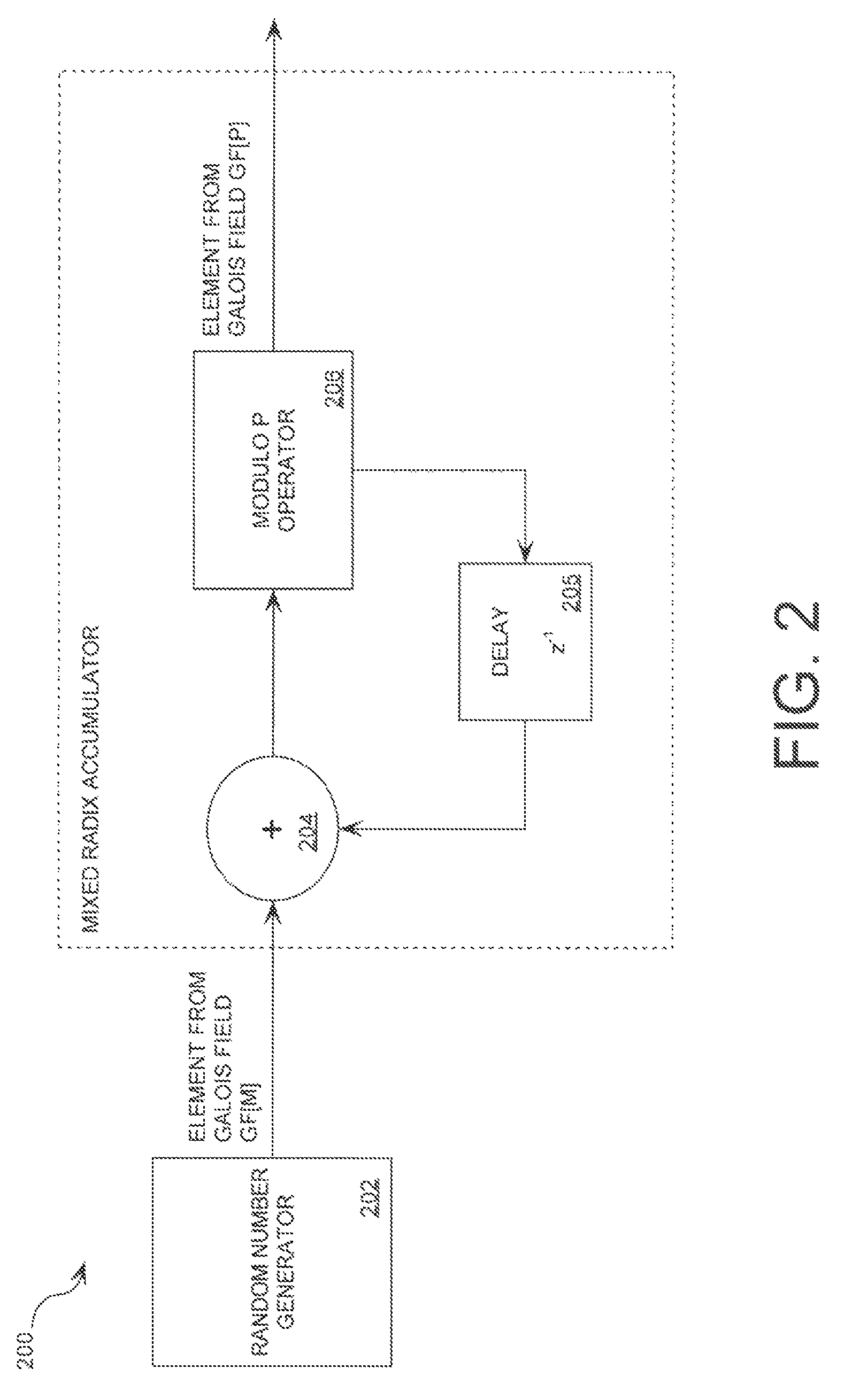Mixed radix number generator with chosen statistical artifacts
a statistical artifact and mixed radix technology, applied in the field of mixed radix conversion, can solve the problems of inefficient computation in the digital (binary) domain, inability to perform statistical artifact selection, and inability to achieve statistical artifact selection,
- Summary
- Abstract
- Description
- Claims
- Application Information
AI Technical Summary
Benefits of technology
Problems solved by technology
Method used
Image
Examples
example 1
[0040]Let M=5*7=35, p=3, and an initial condition value of the unit delay be zero (0). It should be noted that the initial condition (initial output value) of the unit delay can alternatively be any of zero (0), one (1), or two (2). Note that, absent the feedback mechanism described above, the outputs of the modulo P operation is a stream of values that have a statistical artifact within a Galois field GF[P]. If the distribution of the outputs of the random number generation are truly uniform, then the first two (2) equivalence classes of the Galois filed GF[P] will be larger by one (1) element than the third (3rd) equivalence class. This is easily seen from the computation of 35 modulo 3=(3*11+2) modulo 3=2 modulo 3. The feedback (i.e., delay) in FIG. 2 spreads this statistical non-uniformity in the Galois field GF[P] about all three (3) of its equivalence classes.
[0041]If the outputs of a first random number generation is a stream defined as {23 8 19 31 0 6 13 21 21 . . . }, then ...
PUM
 Login to View More
Login to View More Abstract
Description
Claims
Application Information
 Login to View More
Login to View More - R&D
- Intellectual Property
- Life Sciences
- Materials
- Tech Scout
- Unparalleled Data Quality
- Higher Quality Content
- 60% Fewer Hallucinations
Browse by: Latest US Patents, China's latest patents, Technical Efficacy Thesaurus, Application Domain, Technology Topic, Popular Technical Reports.
© 2025 PatSnap. All rights reserved.Legal|Privacy policy|Modern Slavery Act Transparency Statement|Sitemap|About US| Contact US: help@patsnap.com



